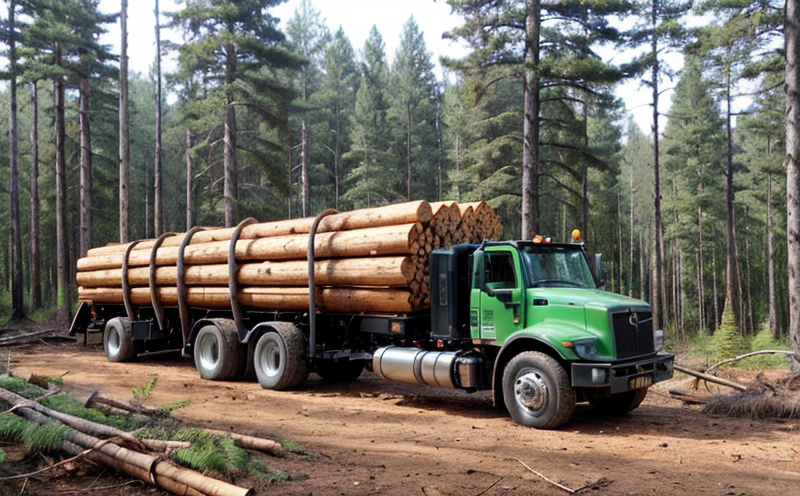Timber Fire Resistance Testing
In the realm of forestry products testing, timber fire resistance is a critical aspect ensuring structural integrity and safety in construction. Timber, though inherently combustible under certain conditions, can be engineered to withstand high temperatures for extended periods. This service involves rigorous laboratory-based tests designed to evaluate how long pieces of wood or wooden structures remain stable when exposed to intense heat.
The process begins with the selection of appropriate specimens representative of typical construction materials used in timber-framed buildings. Specimens are cut into standard sizes and shapes, ensuring uniformity across samples for accurate comparison during testing. Preparing these specimens requires precision; any deviation could lead to inaccurate results that do not reflect real-world scenarios.
Once prepared, the specimens undergo exposure to controlled environments where temperatures reach up to 1200°C (2200°F), simulating conditions found in industrial fires or severe building fires. The duration of heat application varies depending on specific requirements but often lasts several hours. During this time, continuous monitoring measures not only temperature changes but also the rate at which specimens char and deform.
Following exposure, evaluation focuses on three main criteria:
- The extent to which the specimen chars
- Any signs of structural deformation or collapse
- Whether the fire resistance rating (FRR) meets specified standards
These evaluations help determine whether timber can maintain its load-bearing capacity and stability over time, thereby protecting buildings from potential hazards associated with fire. Compliance with international standards such as ISO 834 ensures consistency in testing protocols worldwide.
| Standard | Description |
|---|---|
| ISO 834:2017 | Determining the time-temperature curves for exposures of materials and products to flames. |
| ASTM E119-16 | Fire tests on building materials and products. |
| EN 1363:2002 | Determining the time-temperature curves for exposures of materials to flames in standard atmospheres (conventional, forced draft). |
Industry Applications
Forestry products testing, particularly timber fire resistance, finds extensive application across various sectors:
- Building and construction: Ensuring compliance with fire safety regulations.
- Insurance industry: Assessing risk levels associated with structures using timber components.
- Retail trade of building materials: Providing evidence for marketing claims regarding product performance under extreme conditions.
Eurolab Advantages
At Eurolab, we pride ourselves on offering comprehensive timber fire resistance testing services tailored to meet your unique needs:
- State-of-the-art facilities equipped with advanced instrumentation for precise measurements.
- Experienced technicians trained in following international standards meticulously.
- A commitment to confidentiality, ensuring all test results remain confidential and secure.
- Dedicated customer support teams available round the clock to assist with any queries or concerns.
Use Cases and Application Examples
Here are some real-world scenarios where timber fire resistance testing plays a crucial role:
- A developer planning a new residential complex seeks assurance that the chosen framing materials will provide adequate protection against accidental fires.
- An insurance company wants to assess the risk posed by an existing property before underwriting it.
- A timber supplier wishes to introduce a new product line emphasizing fire safety features; testing helps validate these claims.





